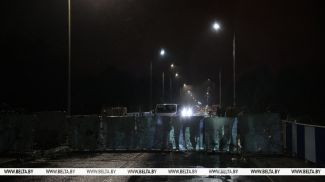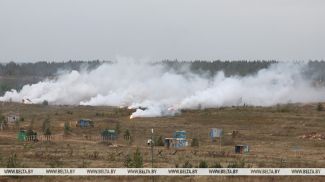SMOLEVICHI DISTRICT, 14 January (BelTA) – The Belarusian national telecommunications company RUP Beltelecom has finished testing a 5G network and is ready to deploy it. Beltelecom Director General Yuri Petruchenya made the statement during a presentation of the 5G technology in the China-Belarus industrial park Great Stone on 14 January, BelTA has learned.
The China-Belarus industrial park Great Stone was one of the two locations where the 5G technology had been tested. The local network operates in the 3.6GHz frequency range. The second test location is in Kopyl District, Minsk Oblast. The technology is supposed to address digital inequality between urban areas and the countryside. It is in that district that Beltelecom has tested the CIS' first 5G network operating in the 700MHz frequency range. Both test locations rely on Huawei cell sites.
The Beltelecom director general said: “The comprehensive nature of this solution makes this pilot project unique. The test area in the China-Belarus industrial park Great Stone demonstrates 5G capabilities in an urban environment, in an industrial area while the test area in Kopyl District does the same in a rural area.”
The Beltelecom head expects the new technology to help develop the Internet of Things, unmanned transportation, the smart city concept, and to also interest members of the general public, who will actively use 5G capabilities.
The 5G technology advantages include high access speeds with minimal delays, the ability to use simultaneously operating devices, and high energy effectiveness. Access speeds in the China-Belarus industrial park Great Stone peaked at 1.235Gbps.
Beltelecom is ready to offer smart security services based on the 5G technology. Thanks to an integrated CCTV system and special software a common turnstile can recognize faces and control access to a site. The 5G technology's ability to control robots has also been tested.
The 5G technology is already used in the China-Belarus industrial park Great Stone to test unmanned transportation solutions and a smart intersection. The system can recognize pedestrians and control traffic lights thanks to a video analytics module and a video camera.













